Caves are some of the most fragile ecosystems in the Texas Hill Country. Light is limited and the air is still. Our caves are protected with great care on behalf of the fragile life within them. Animal adaptations in caves range from huge pinchers to feel around in the dark to a complete lack of eyes. Caves in Central Texas are often the connecting link between the Edwards Aquifer and the Earth’s surface.
Special Cave Creatures
All six of the karst invertebrates protected under the Balcones Canyonlands Conservation Plan were listed as endangered in September of 1988 and live in only a few local caves. Though not much is known about them, they do have some things in common. As invertebrates they do not possess an internal skeleton as humans do for providing rigidity and form to their bodies. Rather, they have a rigid exterior, or exoskeleton, for that function -- hence the term “invertebrate.” They are all troglobites, a name that describes animals so completely adapted to a cave that they spend their entire life cycle there and can exhibit loss of pigment and often lack functional eyes.
The primary threat to survival for these cave-obligated species is urban development. Complete loss of habitat occurs when caves are filled in. Paving over caves or creating new openings can affect hydrologic flow and change cave temperature and humidity beyond a range the species can tolerate. Urban development also results in pollution from pesticides, fertilizers, roadway runoff, and other chemicals that seep through soil and porous limestone to contaminant caves and groundwater.
Tooth Cave ground beetle (Rhadine persephone)
Measuring in at about 1/4 of an inch, this tiny, reddish-brown beetle is the largest of the protected karst invertebrates. It does possess very small eyes though it lives its entire life in a cave. It rapidly runs across the cave floor searching for tiny cave insects or can be found in areas of deep, loose silt where it digs to search for cave cricket eggs. It has been documented in almost 30 local caves.
Tooth Cave pseudoscorpion (Tartarocreagris texana)
This is the second tiniest of the protected cave invertebrates at 3/16 of an inch long. Similar to a scorpion, it has pinchers, though quite tiny, that it uses to catch its prey of small invertebrates. It lacks any type of tail and has no eyes. It is typically found under rocks and little is known about its habits or reproductive patterns.
Tooth Cave spider (Tayshaneta myopica)
At 1/16 of an inch long, this pale, cream-colored spider is the tiniest of the protected cave invertebrates. It has relatively long legs and rudimentary eyes. It can be found hanging from a small tangle or sheet web from cave ceilings and walls seeking tiny invertebrates to eat.
Bee Creek Cave harvestman (Texella reddelli)
This small invertebrate is a light yellowish-brown and averages 1/8 inch long with long legs typical of most harvestman. It lives in total darkness under rocks and doesn’t have eyes. Similar to other harvestman, it doesn’t create a web, catching its prey of tiny insects as it walks slowly about the cave.
Bone Cave harvestman (Texella reyesi)
Listed as endangered in September 1988, this long-legged harvestman is less than 1/8 inch long. Similar to the Bee Creek Cave harvestman it is blind, is a pale orange-brown color, and feeds on tiny invertebrates. It is typically found under rocks. Studies have indicated this species is especially sensitive to low humidity and will retreat to the coolest and most moist places of a cave during hot summers.
Kretschmarr Cave mold beetle (Texamaurops reddelli)
Listed as endangered in September 1988, this tiny dark-brown beetle is less than 1/8 inch long. It has short wings, long legs, no eyes, and can be found in total darkness under rocks and organic debris that has washed into the cave. Very little is known about this beetle including exactly what it eats.
|
(Texamaurops reddelli) |
(Rhadine persephone) |
|
(Texella reyesi) |
(Tartarocreagris texana) |
Airmen's Cave FAQ
Why is it called "Airmen's" Cave?
In March of 1971, two airmen who were stationed at Bergstrom Air Force Base discovered the cave, and began excavation in the entrance. Later that year, a captain in the Air Force, along with local cavers went back to the cave and proceeded to explore it and created a map.
Does anything live in the cave?
Yes! Airmen's Cave is home to a number of creatures, including raccoons, tri-colored bats, cave crickets, spiders, millipedes, and scorpions.
Why is the cave gated?
For a long time the cave remained open and available for exploration by any who dared. Unfortunately, there have been multiple rescues of people who had gotten lost, and a very apparent rise of the cave being used for illegal substance abuse. In response, those in charge made the decision to close the cave to the public in hopes of preserving the cave's ecological influence, and as a safety precaution for those who would mistreat themselves or the cave.
I've been there before, how do I get access again?
Please contact the cave manager by email.




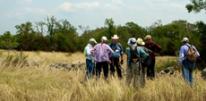
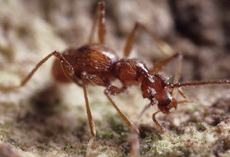 Kretschmarr Cave mold beetle
Kretschmarr Cave mold beetle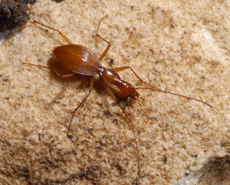 Tooth Cave Ground Beetle
Tooth Cave Ground Beetle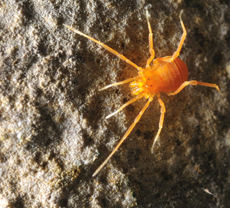 Bone Cave Harvestman
Bone Cave Harvestman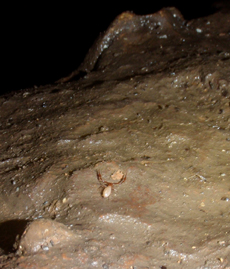 Tooth Cave Pseudoscorpion
Tooth Cave Pseudoscorpion